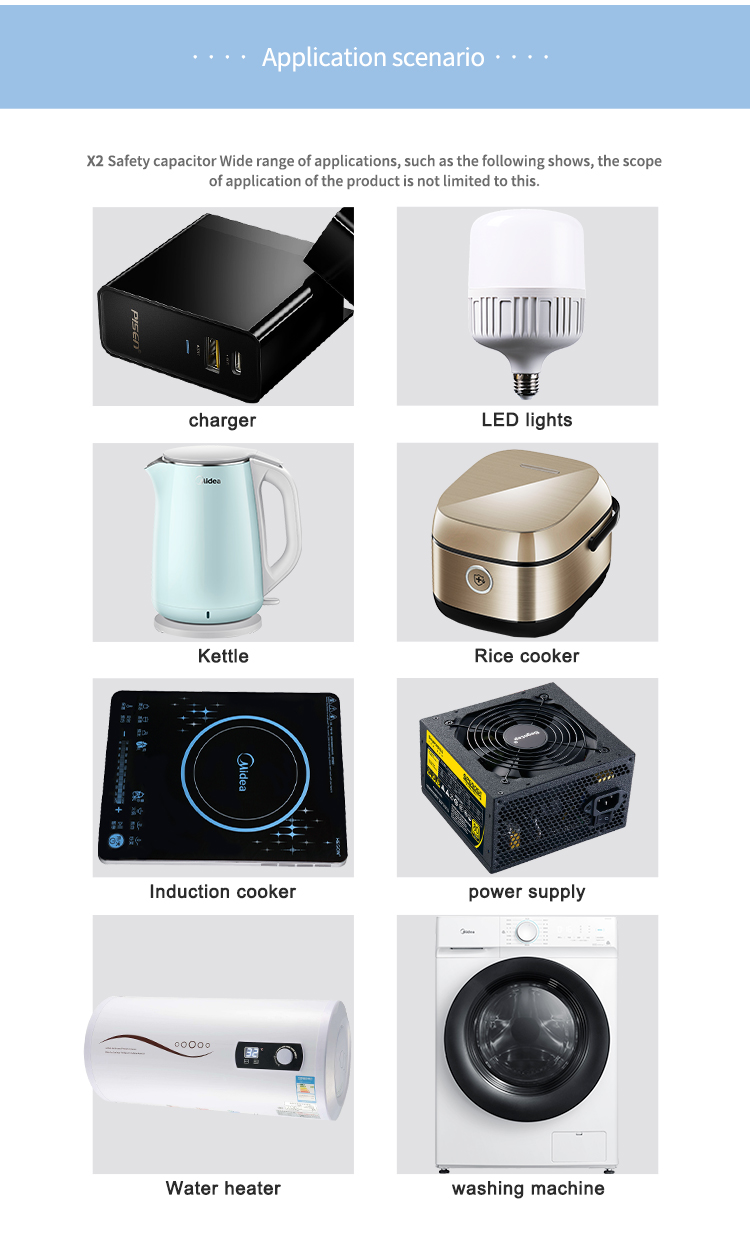X2 Film Capacitors for Noise Suppression
Features
Dielectric: Polypropylene film
Electrode: metal evaporation layer (zinc-aluminum composite thickened type)
Product features: capable to withstand higher overvoltage impact, excellent flame retardant performance, plastic shell (UL94V-0), flame retardant epoxy resin filling.
Custom processing: can be customized according to customer needs
Structure

Suitable for anti-interference occasions such as power crossing lines in high frequency, direct current, alternating current, coupling, and crossover pulse circuits
FAQ
What is the self-inductance of a capacitor?
Self-inductance: When a current passes through the coil, a magnetic field is generated around the coil. When the current in the coil changes, the surrounding magnetic field also changes accordingly. This changing magnetic field can cause the coil itself to generate an induced electromotive force (the electromotive force is used to represent the terminal voltage of the ideal power supply of active components), which is self-inductance.
Why does a capacitor have self-inductance?
The generation of self-inductance is due to "the change of current causes the magnetic flux passing through the coil to change." Generally, only large capacitors have self-inductance when the frequency is high, and small capacitors do not, because large capacitors are made of aluminum foil (referring to aluminum electrolytic capacitor) around many turns, the equivalent inductance cannot be ignored, resulting in poor high-frequency characteristics of large-capacitance electrolytic capacitors.









